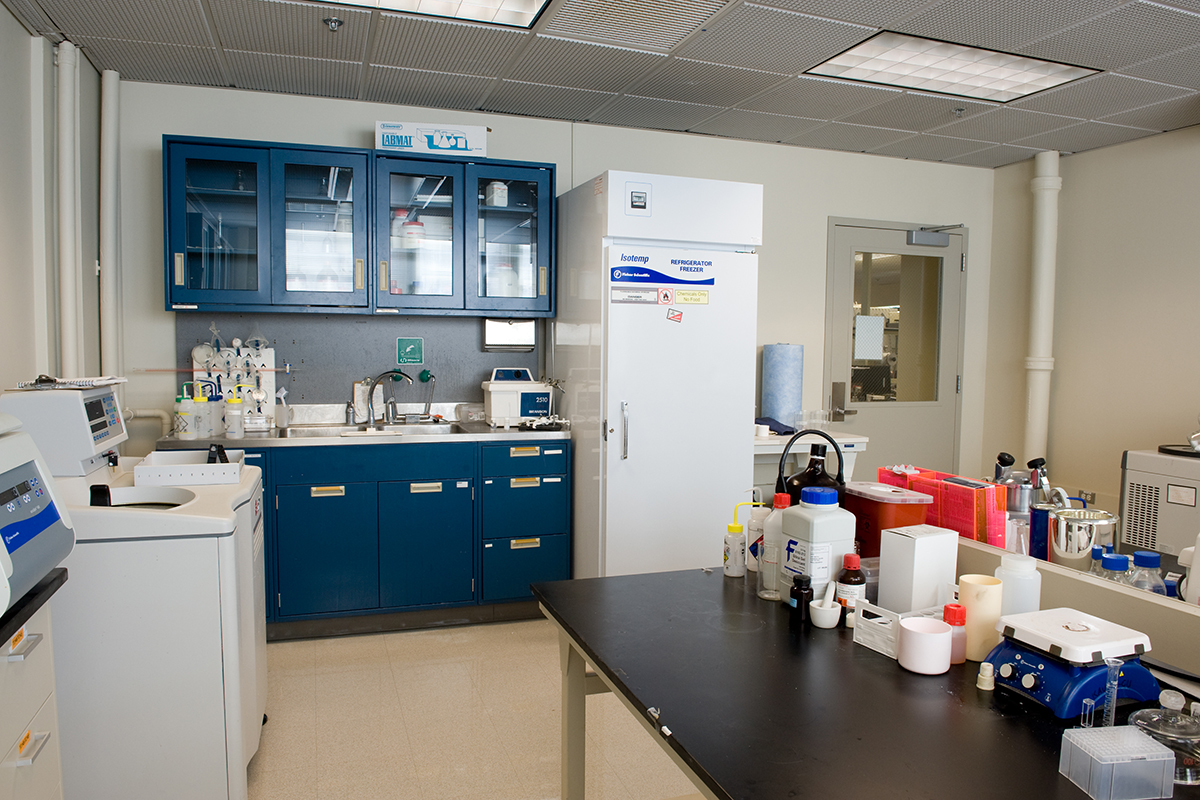Cornell nanomaterials lab opens doors to public
By Syl Kacapyr

A nanomaterials research laboratory in Cornell’s Kimball Hall is opening its doors to the public for the first time. It is expected to draw interest from students, researchers and companies looking to gain access to its state-of-the-art equipment and to spark innovations in energy, medicine and technology.
The opportunity comes with the expiration of a grant from the King Abdullah University of Science and Technology (KAUST), which established the KAUST-Cornell Center for Energy and Sustainability in 2008. The partnership has ended, but the equipment and interest in nanomaterials research remain.
The College of Engineering is leading the open-door effort and is rebranding the 4,000-square-foot lab as the Center for Nanomaterials Engineering and Technology (CNET). For a fee, anyone from undergraduates to industry giants can access the lab and take a new material from concept to prototype.
The lab – which includes equipment for materials synthesis, physical characterization and scale-up – can be used to develop and analyze materials for applications including carbon capture and conversion, electrochemical energy storage in batteries, and hydrogels for biomedicine and drug delivery.
Lynden Archer, CNET co-director and director of the School of Chemical and Biomolecular Engineering, says the infrastructure in the facility already has demonstrated its ability to take products from concept to early stage commercialization.
“For the last seven years my group has pursued research on design, synthesis and analysis of a family of nanoparticle-hybrid polymer materials that emerged as important candidates as electrolytes in batteries,” Archer said. Termed NOHMs, Nanoscale Organic Hybrid Materials, the materials improve battery safety and performance by both physical and chemical pathways. The concept was spun out to create a technology startup company called NOHMs Technologies that initially was located in Cornell’s Langmuir Labs. Ultimately the NOHMs team outgrew their space in Langmuir and moved to Rochester’s Eastman Business Park to pursue the next phase of its development.
The open lab also can encourage new partnerships between companies and the university. Such a partnership blossomed when Summit Lubricants, a company from Batavia, New York, was attracted to the lab to research novel nanoparticle-based lubricant materials. “These lubricants took advantage of the hardness of inorganic nanoparticles and the softness of an associated polymer to create materials with more flexible property profiles, in kilogram-scale quantities. It is remarkable that we were able to take these materials all the way from concept through physical property screening to scale-up in one facility,” Archer said.
CNET will provide the same entrepreneurial opportunity to students by establishing a business incubator in the facility as part of a new entrepreneurship program designed to enhance the experiential learning opportunities of engineering doctoral students. “It will offer an opportunity for Cornell Ph.D. students to develop technologies to a level that goes beyond the limitations of academic research and prepares them for entrepreneurship when they graduate,” said Bruce van Dover, CNET co-director and chair of the Department of Materials Science and Engineering.
Aside from local users, the open lab is expected to draw national interest from major companies from the energy, food, medical and electronics industries as part of a new industry-university institute under development in CNET. About 20 companies will be invited to participate in the partnership under the Institute for Fundamental Research in Separations Science.
Mark Hurwitz, institute director and adjunct professor of chemical and biomolecular engineering, says companies will participate in research, study groups and seminars and have early access to results. “The filtration and separations industry lacks the firm theoretical underpinning and useful mathematical models one finds in other industries. The specific areas I have in mind are filtration, both direct flow and cross flow, chromatography and coalescence,” said Hurwitz, who described separation processes as “incredibly complicated,” adding that knowledge gained through the institute will substantially reduce the need to rely on expensive and time-consuming experimentation for product development.
While CNET will generate revenue for the university, Archer and van Dover say that isn’t the goal of opening the lab to the public. They say, more importantly, the opportunity will help facilitate technology transfer from the university to industry. It also will enable development of new models to educate graduate students interested in translating research into products that affect everyday lives.
CNET has been open since the beginning of October. Visit CNET’s website for more information.
Media Contact
Get Cornell news delivered right to your inbox.
Subscribe